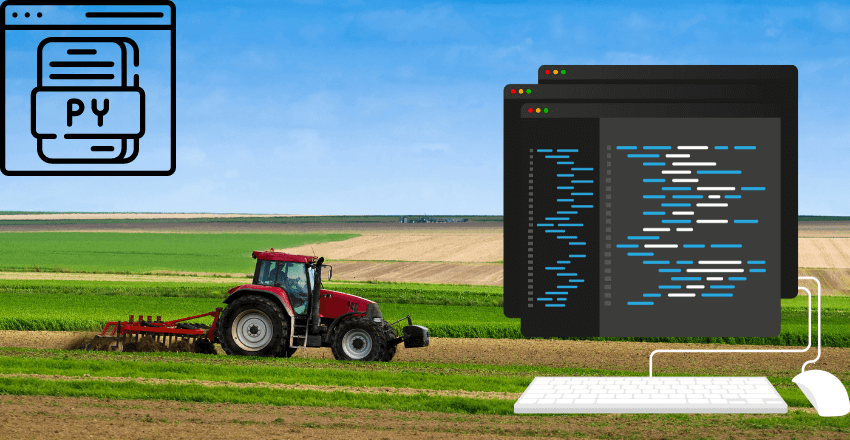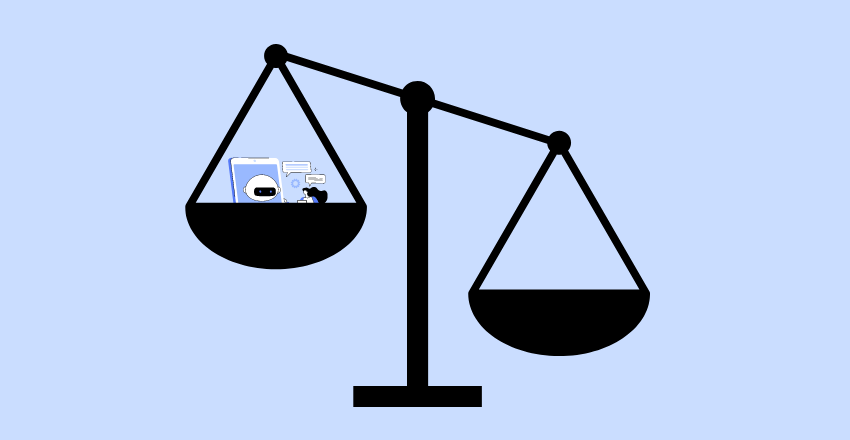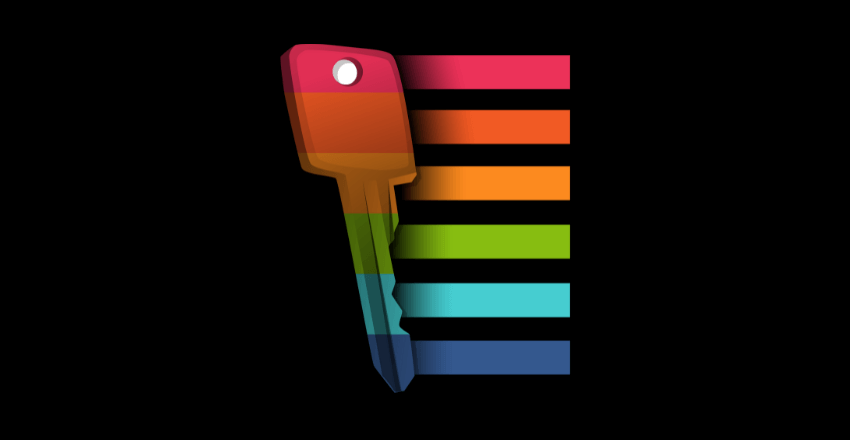 As technology evolves, farmers are increasingly turning to software solutions to improve efficiency, streamline operations, and ultimately increase profits. Python agriculture software offers a versatile and effective solution for farmers looking to enhance their operations.
As technology evolves, farmers are increasingly turning to software solutions to improve efficiency, streamline operations, and ultimately increase profits. Python agriculture software offers a versatile and effective solution for farmers looking to enhance their operations.
Python is a high-level programming language that offers a simple syntax and extensive libraries, making it easy to learn and use. Its flexibility and versatility make it an ideal choice for developing agriculture solutions, such as crop monitoring systems, livestock management tools, and irrigation control systems.
Building Agriculture Solutions with Python
Python has become a popular programming language for developing agriculture solutions due to its simplicity and versatility. With Python, developers can create software that can help farmers improve yields, reduce costs, and streamline operations.
One application of Python in agriculture is crop monitoring systems. Sensors can be placed in fields to collect data on soil moisture, temperature, and other factors that affect crop growth. This data can be processed in Python to provide real-time information to farmers, enabling them to make informed decisions on irrigation, fertilizer application, and pest control.
Livestock management is another area where Python can be leveraged. Software can be developed to track the health and wellbeing of animals, monitor feed consumption, and schedule vaccinations. This data can be analyzed using Python to identify trends and patterns, enabling farmers to make data-driven decisions on livestock management.
Python can also be used to develop irrigation control systems that automate irrigation based on weather conditions and soil moisture levels. This can help reduce water waste and increase crop yields by ensuring that crops receive the appropriate amount of water.
Frameworks for Building Agriculture Solutions with Python
There are several Python frameworks that can be used to develop agriculture solutions, such as Django, Flask, and Pyramid. Each framework has its advantages and disadvantages, and the choice of framework will depend on the specific needs of the project.
Django is a popular framework for building web applications and has built-in features for data management and authentication. Flask is a lightweight framework that is easy to use and can be quickly set up. Pyramid is a more flexible framework that is well-suited for larger, complex applications.
Code examples can be used to compare different frameworks. For instance, to demonstrate the difference in syntax between Flask and Django:
Flask:
from flask import Flask app = Flask(__name__) @app.route ('/') def hello_world(): return 'Hello, World!'Django:
from django.http import HttpResponse def index(request): return HttpResponse("Hello, world. You're at the polls index.")
Each framework has its own proponents and use-cases, and a thorough understanding of each can help developers choose the best framework for their project.
Expert Python Solutions for Agriculture
Developing effective Python solutions for the agriculture industry requires expertise and specialized knowledge. It is important to work with experienced Python developers who understand the specific needs and challenges of the farming sector. Python programming for farming involves analyzing data, creating predictive models, and automating processes for more efficient operations.
Python’s versatility and extensive libraries make it a popular choice for developing agriculture software. From crop monitoring systems to livestock management tools, Python frameworks can provide solutions for various aspects of farming operations. Developers can use Python libraries such as Pandas and NumPy for statistical analysis and data manipulation, while frameworks like Flask and Django can be leveraged for web development.
To develop effective Python solutions for agriculture, it is important to have a deep understanding of both Python programming and farming practices. This requires collaboration between domain experts and software developers. Domain experts can provide insights on specific needs and challenges in the agriculture sector, while software developers can create solutions that address these issues.
Research in Python Agriculture Software
Research in Python agriculture software is constantly evolving, with new advancements in technology and data science shaping the future of farming. For example, machine learning algorithms can be applied to crop and soil data to provide predictive analytics for more efficient farming practices. IoT sensors can be used to monitor weather conditions and automate irrigation systems.
Python’s versatility and extensive libraries make it a popular choice for developing agriculture software. From crop monitoring systems to livestock management tools, Python frameworks can provide solutions for various aspects of farming operations. Developers can use Python libraries such as Pandas and NumPy for statistical analysis and data manipulation, while frameworks like Flask and Django can be leveraged for web development.
Overall, Python is a powerful tool in the agriculture industry, enabling farmers to improve efficiency, enhance yields, streamline operations, and maximize profits. With the right expertise and collaboration, Python agriculture software can lead to significant advancements in the future of farming.
Leveraging Python for Farming Software

Python has become a popular choice for the development of farming software due to its versatility and extensive libraries. Leveraging Python can enable the creation of powerful farming applications that streamline development processes and improve efficiency. Here are some of the Python frameworks commonly used in agriculture software development:
| Framework | Description |
|---|---|
| Django | A high-level Python web framework that allows for rapid development and clean, pragmatic design. It is commonly used in developing web-based agriculture software. |
| Flask | A lightweight Python web framework that is simple and easy to use. It is commonly used in developing small to medium-sized agriculture software applications. |
| Numpy | A Python library that provides support for large, multi-dimensional arrays and matrices. It is commonly used in developing crop monitoring systems and predictive analytics applications. |
These frameworks can assist in the creation of various farming applications, such as crop monitoring systems, livestock management tools, or irrigation control systems. Here is a code example of how Flask can be used to create a simple web-based application for monitoring soil moisture levels:
```python from flask import Flask, render_template app = Flask(__name__) @app.route('/moisture') def moisture(): moisture_level = get_moisture_level() return render_template('moisture.html', moisture_level=moisture_level) def get_moisture_level(): # Code to retrieve moisture level data from sensors or database return 60 if __name__ == '__main__': app.run() ```
Similarly, Numpy can be used to perform various mathematical and scientific operations related to agriculture. Here’s an example of how Numpy can be used to calculate the average yield of a crop:
“`python
import numpy as npyield_data = [42, 38, 45, 40, 41, 47, 39, 44, 43, 36]
average_yield = np.mean(yield_data)print(“Average yield:”, average_yield)
“`
By leveraging these Python frameworks and libraries, developers can create efficient and effective farming applications that assist farmers in various aspects of their operations.
Comparison of Python Agriculture Frameworks
There are various Python frameworks available for agriculture software development, each with its unique features and advantages. In this section, we will compare some of the most popular Python frameworks used in farming applications.
Django vs Flask
Django and Flask are two widely used Python frameworks that can be leveraged for developing agriculture software.
| Framework | Description | Example Code |
|---|---|---|
| Django | Django is a high-level framework suitable for large-scale applications. It comes with built-in admin panels and a templating engine, making it easy to create complex applications. | from django import forms class FarmForm(forms.ModelForm): class Meta: model = Farm fields = [‘name’, ‘location’, ‘crop’] widgets = {‘location’: forms.TextInput(attrs={‘class’: ‘form-control’})} |
| Flask | Flask is a micro-framework that is lightweight and easy to use. It provides a lot of flexibility and is suitable for small to medium-sized applications. | from flask import Flask, render_template app = Flask(__name__) @app.route(‘/farm’) def farm(): return render_template(‘farm.html’) |
As seen in the code examples above, Django is more suited for larger applications and provides more features out-of-the-box, while Flask is more lightweight and flexible.
Pyramid vs Bottle
Pyramid and Bottle are two other Python frameworks used in agriculture software development.
| Framework | Description | Example Code |
|---|---|---|
| Pyramid | Pyramid is a lightweight framework that provides a lot of flexibility. It is easy to use and can be used for small to medium-sized applications. | from pyramid.view import view_config @view_config(route_name=’farm’, renderer=’json’) def farm(request): return {‘name’: ‘Farm’, ‘location’: ‘USA’, ‘crop’: ‘Corn’} |
| Bottle | Bottle is a minimalist framework that is suitable for small applications. It is easy to use and has a small footprint. | from bottle import route, run @route(‘/farm’) def farm(): return {‘name’: ‘Farm’, ‘location’: ‘USA’, ‘crop’: ‘Corn’} run(host=’localhost’, port=8080) |
Pyramid and Bottle are both lightweight and easy to use, but Pyramid provides more flexibility and is better suited for larger applications, while Bottle is more minimalist and better suited for small applications.
Python vs. Other Languages in Agriculture Software Development
Python is rapidly gaining popularity in the agriculture industry as a programming language for developing farming applications. Its simplicity, versatility, and extensive libraries make it a suitable option for developing software solutions that address the specific needs and challenges of the farming sector.
Compared to other programming languages commonly used in agriculture software development, such as Java and C++, Python offers a more user-friendly syntax that is easy to learn and write. Python also has a vast library of pre-built modules that can be easily integrated into farming applications, saving developers time and effort in writing custom code.
Code Examples in Comparison
For instance, let’s compare Python and C++ in implementing a crop monitoring system that can measure soil moisture levels. Here’s how to read data from a sensor in C++:
// C++ code const int soilMoistureSensorPin = A0; int soilMoisture = analogRead(soilMoistureSensorPin);
Now, let’s compare it to Python:
# Python code import RPi.GPIO as GPIO GPIO.setmode(GPIO.BOARD) soil_moisture_pin = 12 soil_moisture = GPIO.input(soil_moisture_pin)
As you can see, Python code is more concise and readable. Besides, it provides ease of integration with other libraries and modules.
Python also has a rapidly growing ecosystem of specialized packages and frameworks that are tailormade for agriculture software development. For instance, frameworks such as Django and Flask provide a quick and easy way to build web-based farm management systems and data analysis tools.
Key Features of Python Agriculture Software

Python agriculture software offers a range of key features and functionalities that can assist farmers in improving their operations and increasing yields. The following are some of the most important features:
| Feature | Description |
|---|---|
| Data analysis | Python provides powerful tools for data analysis, allowing farmers to make data-driven decisions and optimize their operations. |
| Remote monitoring | With Python, farmers can monitor their crops and livestock remotely, using sensors and other IoT devices to collect data in real-time. |
| Predictive analytics | Python can be used to develop predictive models that can forecast trends and help farmers plan for the future. |
| Precision agriculture | Using Python, farmers can implement precision agriculture techniques, such as variable-rate fertilization and irrigation, to optimize crop yields. |
| Customization | Python offers a high degree of customization, allowing farmers to tailor their software to meet their specific needs and challenges. |
By leveraging these features, farmers can improve their efficiency, reduce waste, and maximize profits. For example, by using data analysis tools in Python, farmers can identify patterns in crop yields and adjust their planting strategies accordingly. Similarly, by using remote monitoring tools, farmers can detect problems with their livestock and take action before it’s too late.
Research and Innovation in Python Agriculture Software
Python agriculture software is constantly evolving with advancements in technology and data science. The farming industry requires innovative solutions to address changing climate conditions, consumer demands, and other challenges. Here are some of the recent research and innovation in Python agriculture software:
- Machine Learning: Machine learning techniques are being applied in agriculture to predict and optimize crop yields. Python’s extensive libraries for machine learning, such as scikit-learn and Tensorflow, make it an ideal language for developing predictive models for farming applications. For example, a Python-based machine learning model can help farmers predict the optimal planting time based on weather and soil conditions.
- Data Analytics: Data analytics tools can assist farmers in making informed decisions about crop management, yield optimization, and resource allocation. Python has many libraries for data analysis, such as Pandas and NumPy, which can be used to manipulate and transform large datasets. With Python, farmers can analyze satellite and drone data to monitor crop health and productivity.
- Internet of Things (IoT): IoT devices are increasingly being used in precision farming to monitor and control various aspects of the farm, such as temperature, humidity, and soil moisture. Python can be used to develop IoT-based farming solutions. With the help of IoT sensors, Python programs can control irrigation systems, analyze field data, and automate various farming operations.
- Farm Management Systems: Python is being used to develop farm management systems that help farmers manage their operations more efficiently. From tracking crop growth to monitoring livestock health, Python-based solutions can assist farmers in streamlining their daily activities. Farmers can use Python to develop custom dashboards that provide real-time data about their farming operations.
- Open-Source Development: Python’s open-source nature has led to the development of many libraries and frameworks that are specific to agriculture. For example, “Pyfarmer” is a Python library that helps farmers develop custom applications for their specific needs. “AgroPy” is another open-source Python library that offers tools for crop yield prediction and nutrient management.
As these examples illustrate, Python agriculture software is at the forefront of innovation in the farming industry. With its versatility and extensive libraries, Python is enabling farmers to make data-driven decisions, automate farming operations, and optimize resource allocation.
Implementation of Python Agriculture Software
Integrating Python in farming operations can be a challenging process, but the benefits are worth the effort. Here are some key factors to consider when implementing Python agriculture software:
- Infrastructure: Before implementing Python solutions, it’s essential to assess existing infrastructure and determine if any additional hardware or software is required. This may include sensors, drones, or IoT devices to collect data, as well as cloud storage and processing capabilities to handle the data.
- Personnel: Employees must be trained to use Python software effectively. This includes both technical training on the programming language and software, as well as training on how to interpret and utilize the data collected by the software.
- Data Integration: Integration with existing farm management systems is crucial to ensure smooth operations. Python solutions should be able to communicate effectively with other software and hardware, such as crop management systems or irrigation controllers.
- Testing and Calibration: It’s essential to test and calibrate the Python agriculture software regularly to ensure accuracy and optimal performance. This may include adjusting algorithms, data analysis, or sensor calibration parameters.
- Monitoring and Maintenance: Once implemented, Python software should be monitored regularly to ensure it is running correctly and efficiently. Data backups and security measures should be put in place, and any issues or maintenance requirements should be addressed promptly.
By adhering to these key factors, farmers can successfully implement Python solutions in their farming operations, improving efficiency and maximizing profits.
Maximizing Profits with Python Agriculture Software
By implementing Python agriculture software solutions, farmers can optimize their operations to increase productivity, streamline processes, and ultimately, maximize profits. The ROI of farming software can be significant, with many farmers reporting increased yields and reduced operational costs.
One of the key benefits of using Python agriculture software is its flexibility and adaptability. Python is a highly versatile programming language that can be used to develop a wide range of agricultural software solutions, from crop monitoring and irrigation control systems to livestock management tools and precision agriculture technologies.
Code Example: Python Agriculture Application
Below is an example of a Python agriculture application that utilizes data analysis and predictive analytics to optimize crop yields.
“`
import pandas as pd
import numpy as np
from sklearn.linear_model import LinearRegression
# Load crop data
crop_data = pd.read_csv('crop_data.csv')
# Clean and preprocess data
crop_data = crop_data.dropna()
X = crop_data.iloc[:, :-1].values
y = crop_data.iloc[:, -1].values
# Fit linear regression model
regressor = LinearRegression()
regressor.fit(X, y)
# Predict crop yield for new season
new_season_data = np.array([[0.5, 0.3, 0.7, 0.8]])
new_season_yield = regressor.predict(new_season_data)
print("Predicted crop yield for new season: ", new_season_yield[0])
```Comparing Python Frameworks: Flask vs. Django
When it comes to building agriculture solutions with Python, there are several popular frameworks to choose from. Flask and Django are two of the most widely used frameworks in the Python community, each with their own unique features and advantages.
Flask is a lightweight framework that is highly customizable and easy to use. It is ideal for small to medium-sized projects that require rapid development and deployment. Django, on the other hand, is a more comprehensive framework that offers a wide range of built-in tools and functionalities. It is well-suited for large-scale projects that require complex data modeling and rich user interfaces.
Code Example: Flask Application
Below is an example of a Flask application that can be used to monitor crop conditions in real-time.
“`
from flask import Flask, render_template, request
import requests
app = Flask(__name__)
@app.route('/')
def index():
return render_template('index.html')
@app.route('/monitor_crops')
def monitor_crops():
crop_type = request.args.get('crop_type')
weather_api_key = 'YOUR_API_KEY_HERE'
lat = 'YOUR_LATITUDE_HERE'
lon = 'YOUR_LONGITUDE_HERE'
# Retrieve weather data from API
url = 'https://api.openweathermap.org/data/2.5/weather?lat=' + lat + '&lon=' +
lon + '&appid=' + weather_api_key
response = requests.get(url)
weather_data = response.json()
# Monitor crop conditions
if crop_type == 'corn':
if weather_data['main']['temp'] > 25:
return "Warning: High temperature may negatively affect corn yields"
else:
return "Corn crops are currently healthy"
elif crop_type == 'soybeans':
if weather_data['wind']['speed'] > 5:
return "Warning: High winds may negatively affect soybean yields"
else:
return "Soybean crops are currently healthy"
else:
return "Invalid crop type"
```FAQ

Q: What is Python agriculture software?
A: Python agriculture software refers to software programs or applications that are developed using the Python programming language specifically for use in the agriculture industry. These software solutions can help farmers and agricultural professionals streamline operations, improve efficiency, and maximize yields and profits.
Q: How can Python agriculture software benefit farmers?
A: Python agriculture software can benefit farmers by improving efficiency in various aspects of farming operations. It can be used for tasks such as crop monitoring, livestock management, irrigation control, data analysis, and more. By leveraging Python software, farmers can optimize their processes, make data-driven decisions, and ultimately enhance their productivity and profitability.
Q: Are there any specialized Python frameworks for agriculture?
A: Yes, there are specialized Python frameworks and libraries that are commonly used in agriculture software development. These frameworks offer pre-built functionalities and tools that can expedite the development process and enable the creation of powerful farming applications. Examples of popular Python frameworks for agriculture include PyCrops, Agrisim, and Farmbot.
Q: How does Python compare to other programming languages in agriculture software development?
A: Python has several advantages over other programming languages when it comes to agriculture software development. It is known for its simplicity, readability, and extensive libraries and modules, which make it easier to develop and maintain code. Additionally, Python’s versatility allows it to be used in a wide range of applications, from data analysis to machine learning, making it well-suited for the evolving needs of the farming industry.
Q: What are some key features of Python agriculture software?
A: Python agriculture software offers various key features and functionalities that can benefit farmers. These include data analysis capabilities, remote monitoring, predictive analytics, precision agriculture tools, and more. By harnessing these features, farmers can gain valuable insights, optimize resource allocation, and make informed decisions to improve their farming practices.
Q: How can Python agriculture software be implemented in farming operations?
A: The implementation of Python agriculture software in farming operations involves integrating the software into existing infrastructure, training personnel on how to use the software effectively, and overcoming any potential challenges or barriers. It is important to have a well-planned implementation strategy to ensure a smooth transition and maximize the benefits of using Python agriculture software.
Q: How can Python agriculture software help maximize profits?
A: Python agriculture software can help maximize profits by improving efficiency, optimizing resource allocation, and enabling data-driven decision-making. By streamlining operations, farmers can reduce costs and increase yields. Additionally, Python agriculture software can provide valuable insights and predictions, allowing farmers to make informed choices that can positively impact their bottom line.
Lydia is a seasoned technical author, well-versed in the intricacies of software development and a dedicated practitioner of Python. With a career spanning 16 years, Lydia has made significant contributions as a programmer and scrum master at renowned companies such as Thompsons, Deloit, and The GAP, where they have been instrumental in delivering successful projects.
A proud alumnus of Duke University, Lydia pursued a degree in Computer Science, solidifying their academic foundation. At Duke, they gained a comprehensive understanding of computer systems, algorithms, and programming languages, which paved the way for their career in the ever-evolving field of software development.
As a technical author, Lydia remains committed to fostering knowledge sharing and promoting the growth of the computer science community. Their dedication to Python development, coupled with their expertise as a programmer and scrum master, positions them as a trusted source of guidance and insight. Through their publications and engagements, Lydia continues to inspire and empower fellow technologists, leaving an indelible mark on the world of scientific computer science.


![15 Most Contributed Python Projects on GitHub [Stats]](https://hirepythondeveloper.com/wp-content/uploads/2024/03/15-Most-Contributed-Python-Projects-on-GitHub-Stats-1-150x150.png)




